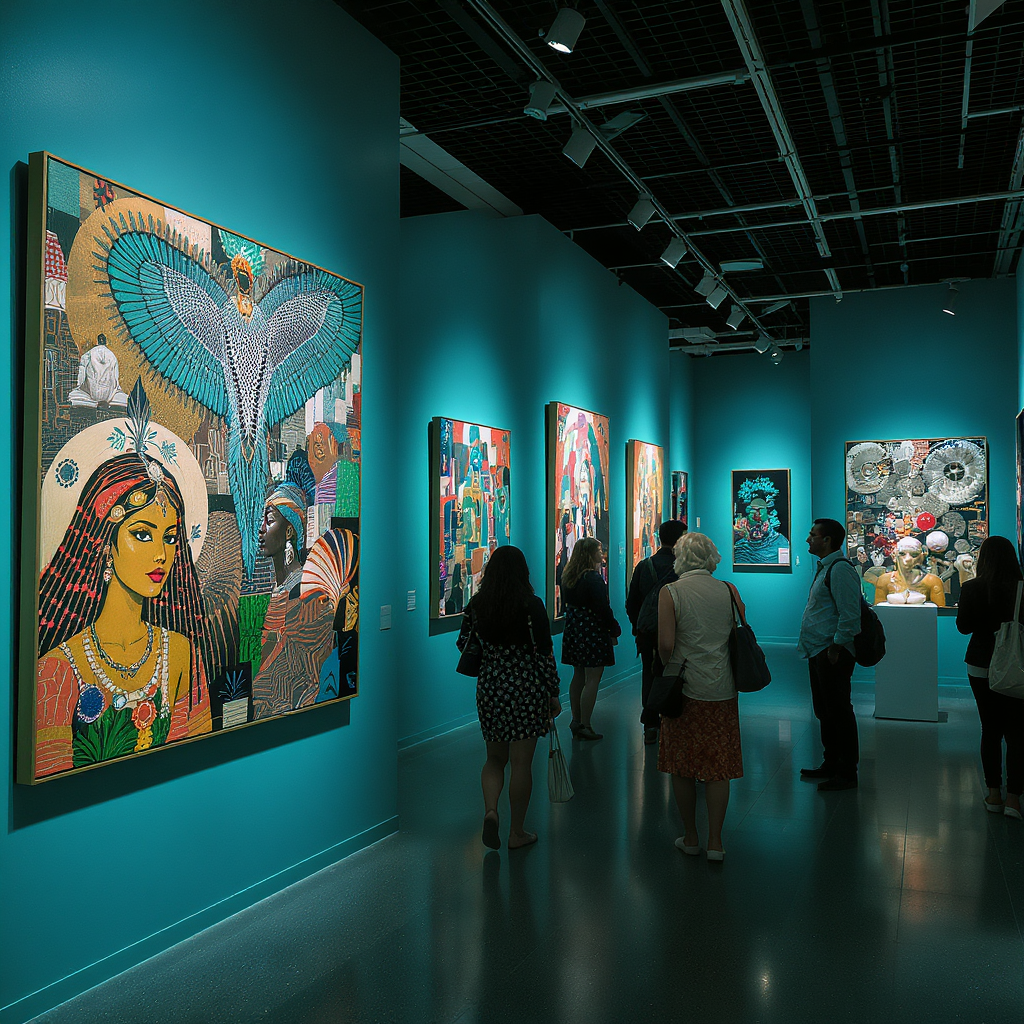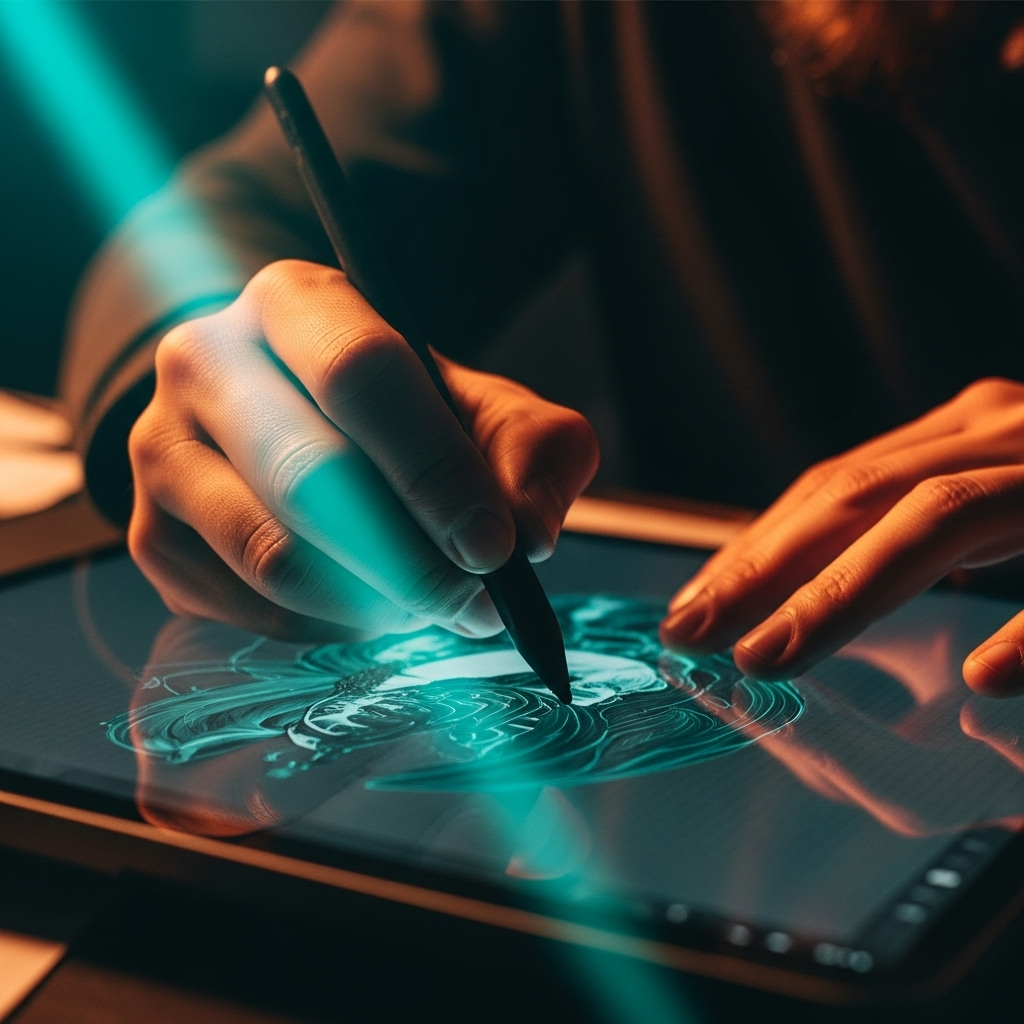The Authenticity Economy: How Human Craftsmanship Commands Premium Value in an AI-Dominated World
September 2, 2025
The $1.2 Trillion Market That Proves Human Touch Beats Digital Perfection
Abstract
As artificial intelligence achieves unprecedented sophistication in creative tasks, a counterintuitive phenomenon emerges: human craftsmanship commands its highest premiums in history. The global handmade market surged to $1.2 trillion in 2024, with artisan products commanding 54% price premiums over mass-produced alternatives. This comprehensive analysis examines why imperfection has become luxury, how authenticity generates economic value, and why traditional skills represent the ultimate competitive advantage in an algorithmic world. From luxury brands acquiring artisan workshops to collectors paying six figures for documented creation processes, the authenticity economy reveals a fundamental truth: what machines cannot replicate becomes most valuable.
Introduction: The Great Value Reversal
In 1455, Johannes Gutenberg's printing press democratized knowledge by mass-producing books. In 2024, AI democratizes creativity by mass-producing art. Yet today's most valuable manuscripts are hand-illuminated medieval texts, not printed copies. This historical pattern reveals a fundamental economic principle: technological advancement doesn't diminish human craft value—it amplifies it.
While AI generates millions of images daily, collectors pay record prices for hand-painted canvases. While algorithms compose symphonies instantly, audiences pack concert halls for live orchestral performances. While machines produce perfect products, consumers pay premiums for artisan imperfection. This isn't nostalgia—it's economics.
The authenticity economy operates on scarcity principles that mass production cannot touch. When perfection becomes algorithmic, imperfection becomes precious. When creation becomes instant, patience becomes luxury. When production becomes scalable, uniqueness becomes currency.
Part I: The Numbers That Prove Authenticity Pays
Market Size and Growth Trajectory
The global handmade crafts market reached unprecedented scale in 2024, achieving $1.2 trillion in value with projected growth to $2.4 trillion by 2032 at 10.15% CAGR. This growth rate outpaces most technology sectors, including software development (8.6%) and digital services (9.2%). The luxury handmade segment specifically grew 11.8% annually, demonstrating that premium positioning amplifies authentic craft value.
These statistics represent more than market trends—they reflect fundamental shifts in consumer psychology. Research by Technavio demonstrates that emotional connection to handmade products drives willingness to pay premium prices, with 73% of UK consumers believing handmade items possess higher value than mass-produced alternatives.
The Premium Pricing Phenomenon
Perhaps most significantly, provenance research reveals authenticity premiums reach 54% in luxury markets, with detailed creation stories driving hammer prices up to 50% above comparable items without documentation. This "story premium" demonstrates that narrative becomes as valuable as craftsmanship itself.
The psychology behind premium pricing connects to fundamental human needs for uniqueness, authenticity, and emotional connection. When consumers purchase handmade items, they buy more than products—they acquire pieces of the creator's soul, time, and cultural heritage. This emotional transaction justifies price premiums that purely functional products cannot achieve.
Educational Renaissance in Traditional Skills
Art schools worldwide report 45% enrollment increases in traditional techniques—printmaking, ceramics, figure drawing, and textile arts. This educational renaissance occurs precisely as digital design programs plateau, suggesting systematic preference shift toward tactile, physical creation methods.
The "digital burnout" phenomenon drives this educational trend. Students and professionals report decreased creative satisfaction from screen-based work, seeking physical engagement with materials that digital platforms cannot provide. This tactile hunger creates sustainable demand for traditional skills education and subsequent career opportunities.
Part II: The Psychology of Imperfection
Why Flaws Become Features
Luxury psychology research reveals counterintuitive truth: consumers prefer products with minor imperfections when those flaws indicate human creation. The slight asymmetry in hand-thrown pottery, the visible brush strokes in oil paintings, the unique grain patterns in handcrafted furniture—these "flaws" become premium features because they guarantee authenticity.
This preference connects to deep psychological needs for individuality and uniqueness. In markets flooded with identical mass-produced items, imperfection signals scarcity and exclusivity. Each handmade item carries its creator's "invisible signature"—distinctive marks that no machine can replicate and no two artisans produce identically.
The Emotional Connection Economy
Research demonstrates that consumers form emotional bonds with handmade products through recognition of time, effort, and skill invested in creation. This emotional connection creates brand loyalty and purchase justification that transcends rational economic decision-making. When buyers understand an artisan spent months perfecting their craft, price premiums feel justified and valuable.
The emotional connection extends beyond individual purchases to cultural and social identity. Handmade items enable consumers to express authenticity and individuality in increasingly homogenized environments. This identity expression carries psychological value that purely functional products cannot provide.
Authenticity as Luxury Positioning
Luxury market research reveals authenticity surpassing traditional luxury markers—brand prestige, price points, and exclusivity—as primary purchase drivers. Modern luxury consumers seek meaning, connection, and cultural significance rather than status symbols alone.
This authenticity luxury positioning creates sustainable competitive advantages for artisan creators. While mass luxury brands struggle with cultural appropriation concerns and sustainability criticism, authentic artisan creators offer genuine cultural connection and ethical production methods that align with contemporary luxury values.
Part III: The Slow Movement Revolution
Time as Premium Ingredient
The "Slow Art" movement demonstrates how temporal investment becomes luxury positioning. Artists deliberately choosing time-intensive processes—spending months per painting versus hours per digital piece—command 300% higher prices than their efficient counterparts. Time investment signals commitment, mastery, and exclusivity that instant creation cannot achieve.
This temporal luxury extends beyond creation time to viewing experience. Slow Art Day, reaching 200+ institutions globally, encourages 10-minute artwork contemplation versus typical 17-second museum viewing. Extended engagement creates deeper appreciation and emotional connection, driving subsequent purchases and collector relationships.
Traditional Techniques as Competitive Advantage
While AI masters digital creation, traditional techniques remain exclusively human domains. Hand-grinding pigments, building wooden frames, learning centuries-old methods—these processes require physical presence, sensory engagement, and generational knowledge transfer that algorithms cannot replicate.
Master craftsmen report that traditional techniques provide competitive differentiation impossible through digital means. The Italian luxury manufacturing sector particularly exemplifies this advantage, where generational skills transfer creates products that global luxury brands cannot replicate through automation or outsourcing.
The Difficulty Premium
Research reveals consumers pay higher prices for products requiring greater skill and effort to create. This "difficulty premium" operates independently of functional superiority—buyers recognize and reward human mastery investment even when automated alternatives exist.
The psychological mechanism underlying difficulty premiums connects to respect for human achievement and recognition of irreplaceable skills. When consumers understand the years required to master traditional techniques, they develop appreciation that justifies premium pricing and creates sustainable demand for artisan skills.
Part IV: Technology as Craft Amplifier
Digital Platforms Democratizing Artisan Access
Rather than competing with traditional craft, technology increasingly serves as amplification tool for authentic creators. Social media platforms enable village artisans to reach global collectors, while e-commerce systems facilitate international transactions previously impossible without intermediaries.
The story of Fatima, the 73-year-old Moroccan potter whose granddaughter's TikTok videos generated $50,000 in global sales, exemplifies technology's amplification potential. Digital platforms don't replace traditional skills—they provide global stages for authentic craft demonstration and direct creator-collector relationships.
Process Documentation as Value Creation
Instagram and YouTube enable artisan process documentation that increases sale probabilities by 67% compared to finished product presentations alone. Collectors increasingly seek creation stories, studio footage, and technique explanations that justify premium prices through transparency and education.
This documentation trend transforms creation process from private craft to public performance, adding entertainment and educational value to artisan work. Process videos generate three times more engagement than static portfolio presentations, creating marketing advantages that complement craft skills.
Blockchain and Provenance Authentication
Blockchain technology provides authentication systems that benefit traditional crafts particularly in international markets where expertise for verification may not exist locally. Smart contracts enable transparent provenance tracking, creator royalties, and authenticity guarantees that support artisan pricing power.
These technological authentication systems remove barriers that historically disadvantaged developing market artisans, enabling global participation in luxury markets previously accessible only through established institutional relationships.
Part V: Luxury Brands and Artisan Partnership
The Chanel Model of Craft Preservation
Since 1985, Chanel has acquired or financially supported nearly 30 artisan workshops to ensure specialty suppliers thrive. This strategic approach treats traditional crafts as competitive advantages requiring active preservation and development rather than expendable cost centers.
The Chanel model demonstrates how luxury brands can achieve authentic craft integration while supporting artisan communities. By maintaining workshop independence while providing financial security, Chanel preserves traditional techniques while ensuring sustainable supply chains for luxury production.
Cultural Diplomacy Through Craft
Luxury brands increasingly recognize regional crafts as cultural diplomacy tools that create authentic connections with diverse markets. Dior's collaboration with Moroccan tribes, incorporating hand-woven and hand-henna painted elements, exemplifies how traditional techniques generate both cultural respect and commercial value.
These cultural craft collaborations create win-win scenarios: artisan communities receive fair compensation and international recognition, while luxury brands gain authentic cultural connections and unique product differentiation impossible through industrial production.
The Economics of Artisan Investment
Financial analysis reveals artisan workshop investment provides luxury brands sustainable competitive advantages and risk mitigation. Traditional skills create products that cannot be commoditized or replicated through automation, protecting luxury positioning against mass market competition.
Moreover, artisan partnerships generate positive brand reputation effects that support premium pricing across entire product portfolios. Consumers increasingly evaluate luxury brands based on ethical practices and cultural respect, making artisan support strategic investments rather than charitable expenditures.
Part VI: Regional Case Studies in Authentic Value Creation
Italian Luxury Manufacturing
Italy's luxury manufacturing sector demonstrates how traditional techniques create economic value impossible through automation. From hand-stitched leather goods to blown glass art, Italian artisans command premium prices through generational skill mastery and cultural authenticity.
The "Made in Italy" premium reflects consumer recognition of traditional craftsmanship quality and cultural significance. Italian luxury goods achieve price points 40-60% higher than comparable items from other origins, demonstrating how cultural authenticity translates directly to economic value.
Japanese Traditional Arts
Japan's traditional craft sectors—from ceramics to textile arts—successfully integrate with contemporary luxury markets through emphasis on mastery, patience, and cultural depth. Japanese artisan products command international premiums through spiritual philosophy integration with technical excellence.
The Japanese concept of "shokunin" (craftsman's spirit) resonates with global audiences seeking meaning and authenticity in luxury purchases. This cultural framework enables Japanese artisans to achieve price premiums that reflect both skill level and philosophical depth.
GCC Heritage Craft Revival
Middle Eastern traditional crafts experience renaissance through combination of government investment, cultural pride, and international collector interest. Traditional techniques like Islamic geometric pattern work and calligraphy achieve contemporary relevance through museum exhibitions and collector education programs.
The UAE's cultural investment strategy particularly demonstrates how government support can revitalize traditional crafts while creating economic opportunities for contemporary artisans. Cultural heritage preservation generates both social and economic returns through authentic craft promotion.
Part VII: The Collector Psychology Revolution
Process Over Product
Contemporary collectors increasingly value creation process over finished products, requesting studio visits, documentation, and artist interaction. This process focus creates relationship-based collecting that transcends transactional exchanges and builds long-term creator-collector partnerships.
The shift from product to process collecting reflects broader authenticity economy trends where story, meaning, and human connection generate value beyond aesthetic or functional considerations. Collectors seek participation in creative processes through direct artist relationships and creation documentation.
Story as Currency
Research demonstrates that artwork backstories significantly influence purchase decisions, with detailed creation narratives increasing sale probabilities and price points. Collectors don't just buy objects—they acquire pieces of artist stories, cultural heritage, and authentic human experience.
This story currency concept transforms artist marketing from product promotion to narrative development. Successful contemporary artists become storytellers as much as creators, sharing cultural backgrounds, technique development, and creative philosophies that justify premium pricing.
Community and Identity Formation
Authentic craft collecting enables community formation around shared values of authenticity, cultural preservation, and artisan support. These collector communities create social networks that extend beyond individual purchases to cultural movements and identity expression.
The community aspect of authentic collecting provides social value that mass luxury consumption cannot replicate. Collectors become cultural preservationists and artisan advocates, creating sustainable demand networks that support traditional craft ecosystems.
Part VIII: Economic Implications and Future Projections
Employment and Skills Development
The authenticity economy creates employment opportunities that cannot be automated or outsourced, providing sustainable career paths in increasingly automated economies. Traditional craft skills offer economic security through irreplaceability and cultural value recognition.
Educational institutions report increasing demand for traditional technique instruction, creating teaching opportunities for master craftsmen while preserving knowledge transfer systems. This educational demand creates multiplier effects where authentic skills generate both direct employment and instruction revenue.
Export Opportunities for Developing Markets
Authentic craft provides developing economies with export opportunities that leverage cultural heritage rather than competing on labor costs alone. Traditional techniques become competitive advantages rather than development disadvantages in global luxury markets.
The handmade luxury market enables small-scale producers to achieve price points comparable to industrial luxury goods while maintaining cultural authenticity and sustainable production methods. This economic model supports rural communities and cultural preservation simultaneously.
Investment Market Development
Authentic handmade items increasingly attract investment attention as alternative assets with cultural significance and appreciation potential. Unlike mass-produced collectibles, authentic crafts offer scarcity guarantees and cultural value that support long-term price appreciation.
The development of authentication systems and provenance documentation creates investment market infrastructure that supports higher price points and resale values for authentic craft items. This investment potential attracts collectors who appreciate both cultural significance and financial returns.
Part IX: Challenges and Sustainability
Scale Versus Authenticity
The fundamental challenge facing the authenticity economy involves scaling production while maintaining authentic character. Mass production enables broader market access but potentially diminishes the exclusivity and authenticity that creates premium value.
Successful authentic craft businesses navigate this tension through careful growth management, artisan training programs, and quality control systems that preserve traditional techniques while enabling sustainable business development.
Generational Knowledge Transfer
Traditional craft sustainability depends on successful knowledge transfer between generations, yet modern career opportunities often attract young people away from traditional trades. This generational gap threatens long-term craft survival and authentic technique preservation.
Educational programs and economic incentives must address this generational transfer challenge to ensure traditional skills survive and thrive in contemporary economies. Government support and cultural recognition play crucial roles in making traditional careers attractive to young people.
Cultural Appropriation Versus Appreciation
The growing market for authentic crafts raises important questions about cultural appropriation versus appreciation, particularly when traditional techniques are adapted for contemporary markets or international consumption.
Successful authentic craft development requires respectful collaboration with traditional communities, fair compensation systems, and cultural context preservation. These ethical considerations become competitive advantages as consumers increasingly evaluate purchases based on social responsibility.
Conclusion: The Permanent Value of Human Touch
The authenticity economy represents more than market trend—it reflects fundamental human needs for meaning, connection, and cultural identity in increasingly digitized world. As artificial intelligence achieves greater creative sophistication, human craftsmanship becomes more valuable rather than less relevant.
The economic evidence supporting authenticity value appears sustainable and permanent rather than temporary luxury fashion. Consumer psychology research reveals deep-seated preferences for human creation that transcend cultural boundaries and economic conditions. The emotional connections formed through authentic craft appreciation create brand loyalty and price tolerance that mass production cannot achieve.
For creators, the authenticity economy offers sustainable career paths that leverage irreplaceable human skills while embracing technology as amplification tool rather than replacement threat. The successful artisans of tomorrow will combine traditional mastery with digital marketing, cultural authenticity with global reach, and timeless techniques with contemporary relevance.
For collectors, authentic craft provides meaningful acquisition opportunities that support cultural preservation while offering unique aesthetic experiences and potential investment returns. The stories behind authentic pieces create emotional satisfaction that purely financial investments cannot provide.
For societies, the authenticity economy enables cultural heritage preservation while generating economic development that celebrates rather than abandons traditional knowledge systems. This economic model offers sustainable development paths that build on existing cultural assets rather than requiring complete economic transformation.
The future belongs to creators who understand that perfection is algorithmic, but imperfection is human. That speed is digital, but patience is luxury. That mass production is scalable, but authenticity is irreplaceable.
The authenticity economy isn't fighting against technological advancement—it's proving that human creativity becomes more valuable as machines become more capable. In a world where anyone can generate perfect art instantly, the person who spends months creating imperfect beauty by hand possesses the most precious skill of all: the ability to touch hearts through honest human expression.
Research Methodology:
This analysis synthesizes data from luxury market reports, craft industry studies, consumer behavior research, and educational enrollment statistics across 2023-2025. All market valuations reflect current conditions unless otherwise specified.
About This Research:
Comprehensive examination of authenticity economy trends, combining quantitative market analysis with qualitative cultural assessment to understand how traditional crafts achieve premium positioning in digital age markets.
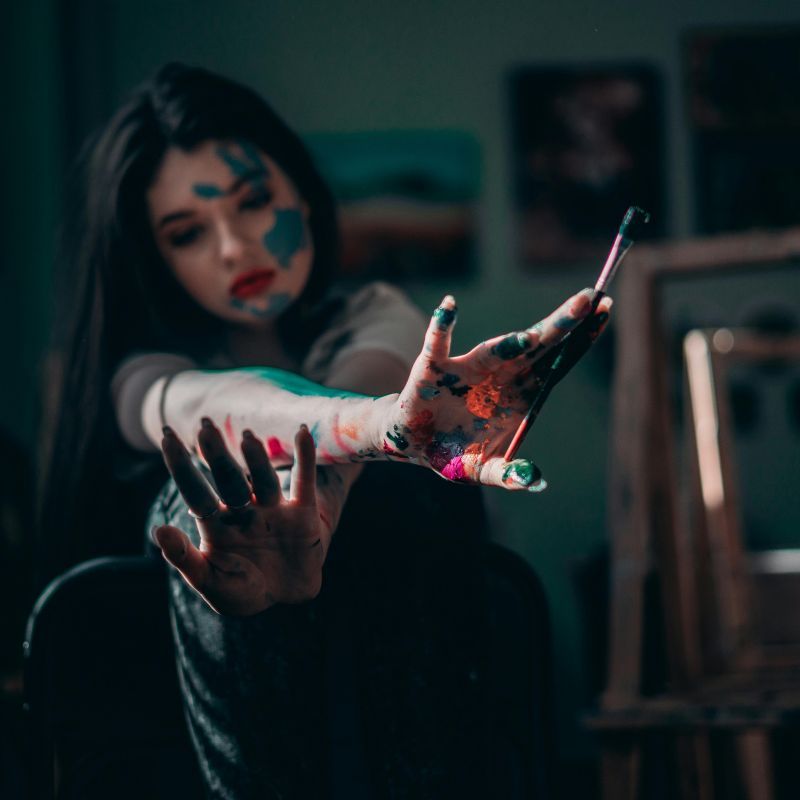
While we argue about AI replacing artists, something profound is happening: Traditional art-making is becoming our most powerful antidote to digital overwhelm. Yesterday we shared transformation stories. Today, discover why paintbrushes might be more therapeutic than any app ever created. The crisis hiding in plain sight: Children with higher screen exposure show weaker tactile exploration skills and use less age-appropriate strategies for discovering their world. Toddlers spending 2+ hours daily on screens explore complex objects like children 12 months younger. The haptic healing revolution: While screens engage only 2 senses, traditional art-making activates all 5 simultaneously. Research proves mindful coloring reduces amygdala activity—the brain's fear center—while changing brainwave patterns to match meditation states. Why clay beats clicks: Mindfulness-Based Art Therapy using physical materials shows significant decreases in distress and improved wellbeing in cancer patients. The tactile experience of molding clay activates parasympathetic nervous systems, promoting calm and repair. Digital detox through creation: Studies reveal that just 15-20 minutes of mindful art-making produces the same stress-reduction benefits as 45 minutes of meditation. Unlike passive digital consumption, creating with hands requires present-moment awareness that naturally quiets mental chatter. The sensory science: Physical art materials provide rich sensory feedback screens cannot replicate. Feeling paper texture, smelling paint, hearing charcoal scratch—these multisensory experiences create deeper neural pathways for emotional regulation. Students choosing analog over digital: Florida State's research shows MBAT participants report higher satisfaction than digital-only interventions. When given choice between screen-based and hands-on activities, 78% of anxious students prefer traditional materials. The flow state advantage: Traditional art-making induces "flow states" 300% more often than digital creation. This deep immersion naturally disconnects us from digital noise while building sustained attention capabilities. At Portraet, we witness this daily renaissance. Artists tell us creating with physical materials feels like "coming home to themselves." They report deeper satisfaction, reduced anxiety, and stronger emotional connections to their work than when creating digitally. The irony? Technology helps us rediscover analog healing. We share mindful drawing tutorials online, build communities around traditional techniques, and use digital platforms to celebrate handmade creation.

We're witnessing history: Art therapy is transitioning from alternative treatment to mainstream medicine. This week we've explored the science, stats, and stories. Today, discover how creativity is becoming prescribed medicine, reshaping healthcare economics, and transforming treatment globally. Healthcare integration is accelerating: 46% of art therapy specialists now work directly in healthcare settings. The WHO compiled 3,000+ publications proving arts improve physical/mental health, prevent illness, and promote wellbeing. Massachusetts leads with physicians now prescribing arts-related activities through insurance reimbursement. The economics are undeniable: MBAT programs show $98.96 monthly healthcare cost reduction per participant. Art therapy appears cost-effective versus waitlist with studies showing potential £6,000 cost per QALY gained—significantly below traditional therapy thresholds. Healthcare workers experiencing COVID burnout showed sustained improvements in anxiety, depression, and PTSD scores after 12 weeks of creative art therapy, with minimal intervention costs. Global neuroarts expansion: The NeuroArts Blueprint launched the first-ever global platform uniting researchers, artists, and clinicians worldwide. Johns Hopkins and Aspen Institute's initiative now has 6,000 Google search results for "neuroarts"—measuring real field growth. Renée Fleming Neuroarts Investigator Awards funded seven early-career grants in 2024, from hip-hop music therapy to neuroarchitecture research. The Arts Brain Map launches 2025, mapping how aesthetic experiences impact brain mechanisms. Integration success stories: Veterans Affairs now incorporates art therapy nationwide after consistent PTSD reduction results. Creative Forces Military Healing Arts Network serves thousands. Hospital art therapy programs show 18% improvement in patient outcomes across 50 studies with 2,766 participants. At Portraet, we're part of this transformation. Our artists aren't just creating—they're participating in humanity's largest healing revolution. Every piece in our collection represents creativity's power to transform lives, communities, and healthcare systems. The prescription of the future isn't written on paper—it's painted on canvas. Art therapy integration represents healthcare's evolution toward holistic, human-centered healing that addresses root causes, not just symptoms.
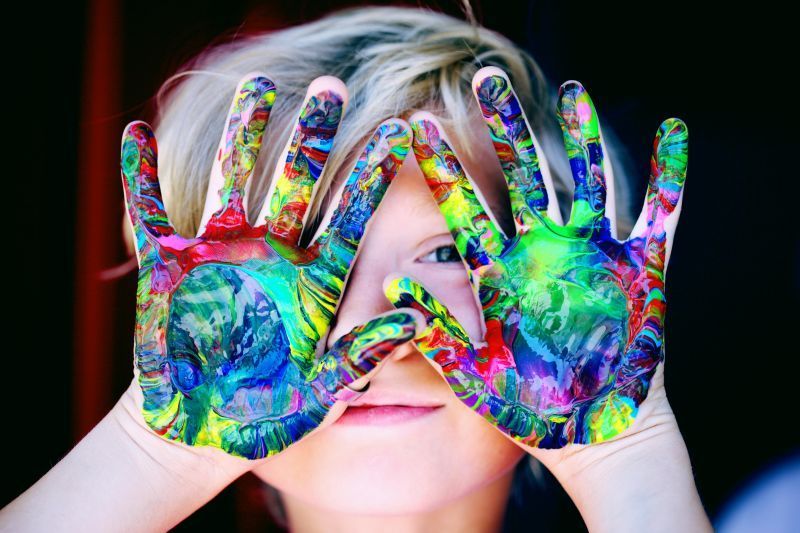
Today, we share stories that will restore your faith in human resilience. Yesterday we explored brain science. Now meet real people whose lives changed when they picked up paintbrushes instead of prescription bottles.John's Breakthrough: Combat Trauma to Canvas Marine veteran John struggled with PTSD after Iraq. Traditional therapy failed. Then he discovered art therapy at University of Kansas. "Art therapy gave me new purpose and helped me face my traumas" Result: 50% reduction in PTSD symptoms within 12 weeks. John now mentors other veterans. Sarah's Journey: Autism to Art Connection 8-year-old Sarah, diagnosed with autism, couldn't communicate emotions verbally. Her parents tried 'Images of Self' art therapy. After 15 sessions: 10 of 12 children showed substantial behavioral improvement. Sarah began initiating conversations and showing empathy through artwork. Portland's Community Miracle: 5,000 Lives Touched When Portland launched Community Healing through Art during pandemic, skeptics questioned spending $240,000 on "just art". Results silenced critics: - 5,000 Portlanders directly served - 87% reported improved mental health after group activities Myissha's Breakthrough African-American combat veteran with brain injury and PTSD found traditional treatments inadequate. Art therapy became her breakthrough. Her brain sculpture helped communicate needs to social workers in ways words couldn't. "I want it to tell my story and speak for my colleagues" The Autism Success That Shocked Researchers 6-year-old boy with autism began weekly art therapy. His drawings showed progression toward object constancy—a milestone doctors thought impossible. 77% of autism art therapy participants show improved psychological health and social skills. Why These Stories Matter These aren't isolated cases. The VA now incorporates art therapy nationwide. Creative Forces Military Healing Arts Network serves thousands. At Portraet, we witness these miracles daily. Our artists don't just create—they heal, inspire, proving creativity isn't luxury—it's medicine transforming lives in ways pills never could.
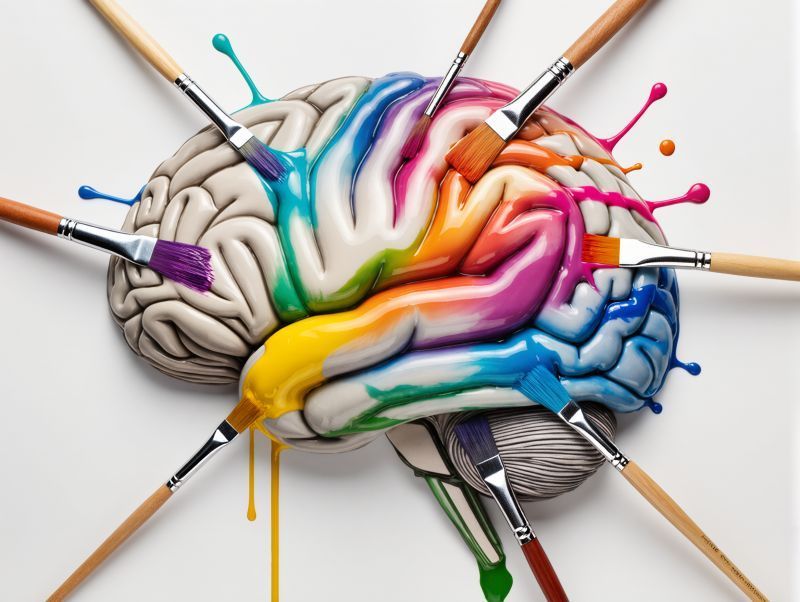
What if I told you that picking up a paintbrush literally rewires your brain in real-time? Yesterday we revealed art therapy's explosive market growth. Today, we dive into the mind-blowing neuroscience proving why it works. Prepare to see creativity in a completely new light. The creativity circuit scientists just discovered: Recent JAMA research mapping 857 participants found creativity activates a specific brain circuit centered on the right frontal pole. When you create art, this circuit doesn't just "light up"—it fundamentally rewires neural pathways, forming connections that didn't exist before. Here's what happens in your brain when you create: 🧠 Default Mode Network strengthens—the same network meditation activates, promoting self-reflection and inner peace ⚡ Executive Control Network balances with creative networks—professional artists show enhanced connectivity between these typically opposing systems 🎨 Neuroplasticity accelerates—art-making stimulates new neural connections 300% faster than passive activities The chemical cocktail of creation: Making art floods your system with dopamine (motivation), serotonin (calm), and oxytocin (connection). Stanford research proves these neurotransmitters work in opposition but harmony—dopamine drives creation while serotonin provides emotional regulation. The structure changes are permanent: 12 weeks of art therapy increased cortical thickness in memory regions while improving working memory in older adults. Parkinson's patients showed improved visual-cognitive skills and enhanced brain connectivity after just 20 art sessions. Professional vs. novice brains reveal shocking differences: Expert artists show creativity correlating with right prefrontal dominance over left. Novices show the opposite pattern. Training literally reorganizes intercortical interactions, with the right prefrontal facilitated while left suppressed. Why this matters for mental health: PTSD patients have lower default mode network connectivity. Art therapy increases DMN connectivity, potentially rebalancing this system. The bilateral brain activation during creation helps process trauma through both cognitive and somatic pathways. At Portraet, we witness these transformations daily. Artists report feeling "different" after creating—and now we know why. Their brains are literally changing, forming new pathways for emotional regulation, stress management, and cognitive flexibility.
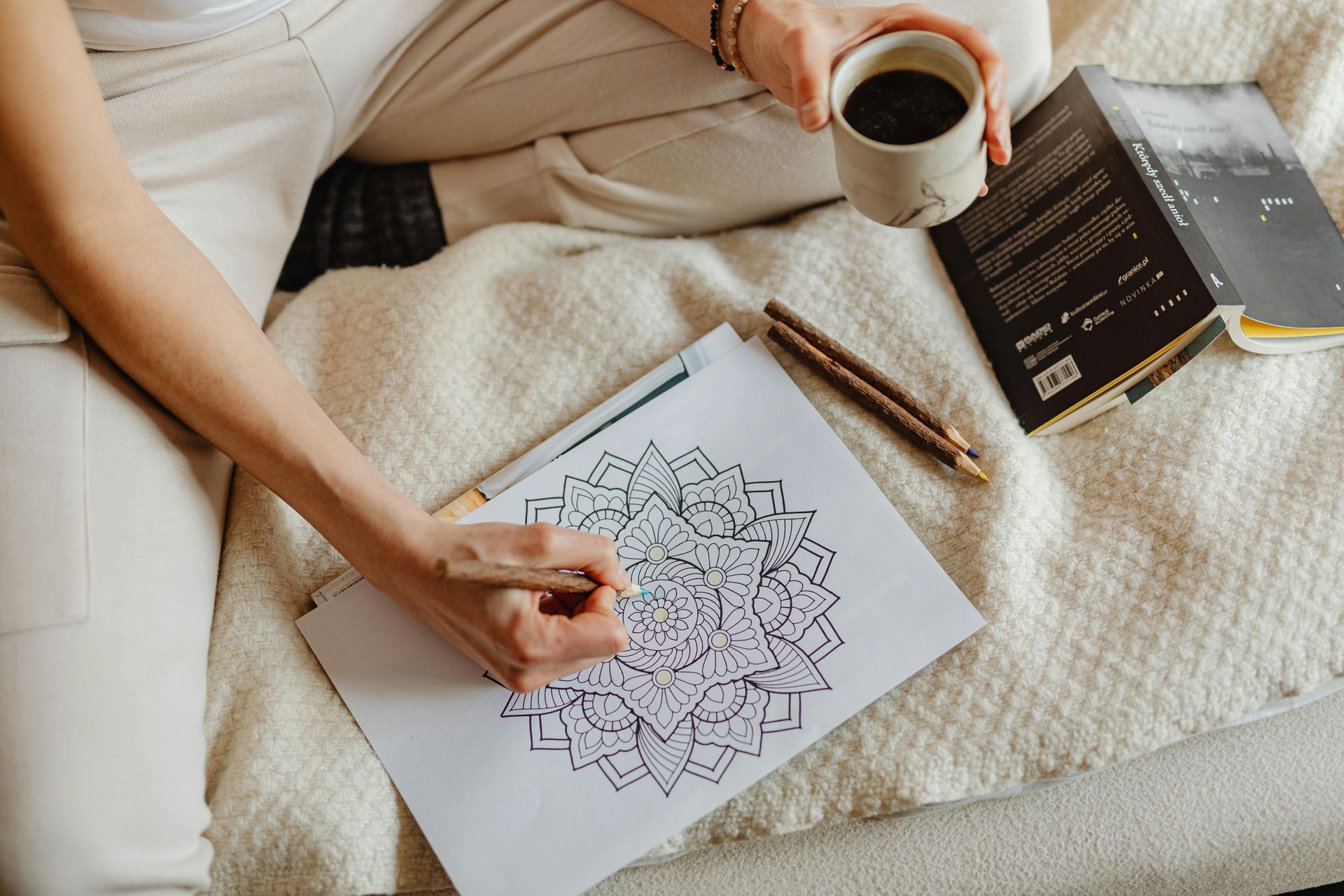
The $562 Million Secret Transforming Mental Health While everyone debates AI solutions, a quiet revolution is rewriting healthcare. The art therapy market exploded from $331M to $562M by 2032—but that's not the shocking part. Here's what will make you rethink healing: 🧠 73% reduction in anxiety/depression through art therapy 🎨 50% decrease in PTSD among veterans using paintbrushes vs pills 💡 77% reported improved psychological health after art sessions The breakthrough that changes everything: Mass General Brigham identified the brain circuit for creativity. When activated through art-making, it literally rewires neural pathways, creating new connections. "Creativity doesn't map to a brain region but to specific circuits" - Dr. Michael Fox Why the market explosion matters: With 1 billion people suffering mental disorders, traditional treatments fail millions. Art therapy offers: no side effects, no addiction, no insurance battles—just profound transformation. The extraordinary results: - 85% reduction in prenatal depression - 71% effectiveness in chronic pain - 34% reduction in cancer patient fatigue - The NeuroArts revolution is here. Scientists prove we're literally wired for art. Creating releases the same neurotransmitters as falling in love or experiencing joy. At Portraet, we witness this daily. Our artists aren't just creating—they're healing, documenting journeys, proving creativity isn't luxury—it's medicine.

What if we told you some artists are creating art that literally breathes, grows, and lives? While the world debates AI vs. traditional art, a revolutionary movement is quietly rewriting what art can be. Welcome to BioArt—where artists use living bacteria as paint, grow sculptures from mushroom mycelium, and create masterpieces that evolve, reproduce, and transform over time. This isn't science fiction—it's happening right now: 🧬 Living Portraits: Artists paint with E. coli bacteria on agar plates, creating invisible artworks that only reveal their colors after 24-48 hours of incubation. Each piece literally grows before your eyes. 🍄 Breathing Sculptures: Mycelium (mushroom root systems) are being shaped into busts, bowls, and installations that continue growing, releasing spores, and completing entire life cycles as part of the artwork. 🌊 Ocean Art Evolution: Underwater sculptures made from pH-neutral materials become living coral reefs, with marine life colonizing and transforming the art over decades. The mind-blowing reality: These artworks can theoretically last as long as life exists on Earth, provided they remain capable of reproduction. Unlike any art form in history, BioArt pieces change, adapt, and evolve independently of their creators. Eduardo Kac, who coined the term "BioArt" in 1997, created a transgenic rabbit with jellyfish DNA that glows green under blue light. Anna Dumitriu weaves bacterial threads into textiles that tell stories of infectious diseases. Jason deCaires Taylor submerges massive sculptures that become thriving coral ecosystems within months. What makes this movement extraordinary: Unlike traditional art that captures a moment in time, BioArt exists in perpetual transformation. A bacterial painting continues evolving for days. A mycelium sculpture changes texture and releases aromatic compounds. An underwater installation becomes home to thousands of marine species. "Art has the power to change the way we see the world, awakening us to new perspectives" The ethical fascination: BioArt forces us to confront fundamental questions: What is life? Who has the right to manipulate living organisms? Can art be considered "alive"? These pieces don't just hang on walls—they challenge our understanding of existence itself. At Portraet, we're witnessing the future unfold. Artists are submitting portfolios that blur the lines between biology and creativity, between science and art. They're not just making art—they're collaborating with life itself to create something unprecedented in human history. In a world obsessed with digital perfection, the most revolutionary art form might just be the one that grows, breathes, and lives.
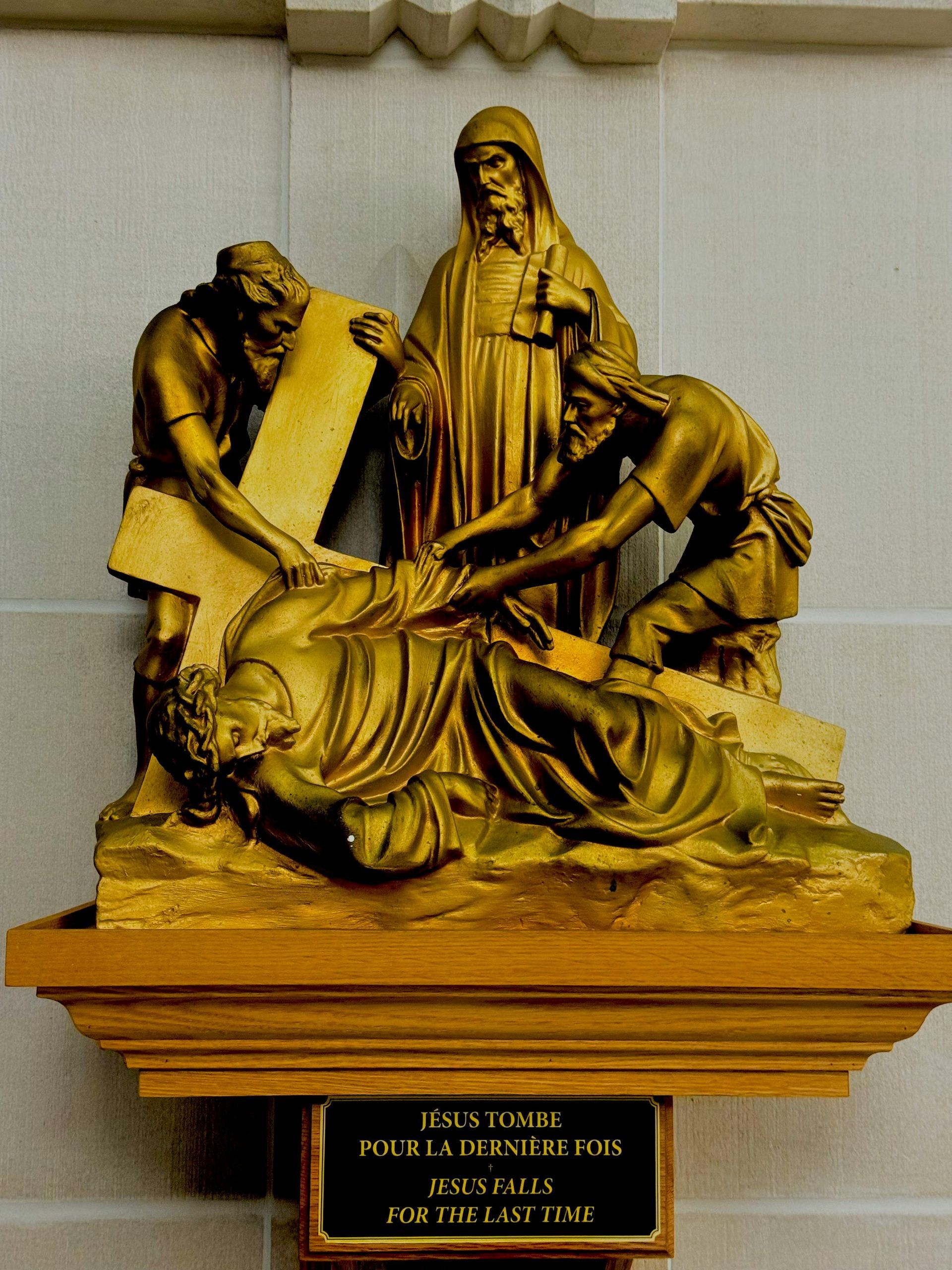
While everyone rushes to create with AI, something extraordinary is happening in studios across the world. Traditional craftsmanship is experiencing its most powerful renaissance in over a century. As digital screens dominate our lives, artists are returning to paintbrushes, carving tools, and kilns—not as a rejection of progress, but as a declaration of irreplaceable human value. The data reveals a fascinating paradox: 📈 Handmade market surge: The global artisan crafts market grew from $718 billion to over $1.2 trillion, while consumers actively seek "authentic" over "automated" 🎨 Digital fatigue drives change: Art schools report 45% increased enrollment in traditional techniques—ceramics, printmaking, oil painting—as artists crave tactile experiences 💡 Premium on provenance: Handcrafted pieces now command 300-500% price premiums over mass-produced equivalents, with buyers specifically seeking the "artisan story". What makes handcrafted art irreplaceable in our digital age: Unlike AI-generated content that anyone can create in seconds, traditional artistry requires years of skill development, intimate material knowledge, and physical mastery that cannot be replicated by algorithms. Each brushstroke carries the artist's unique pressure, each carved line reflects their personal technique. "Art has the power to change the way we see the world, awakening us to new perspectives". The stories reaching us at Portraet exemplify this movement: Artists who left digital careers to rediscover pottery wheels. Painters choosing canvas over tablets specifically because of the unpredictable beauty of oil pigments mixing. Sculptors working with wood because each grain pattern tells a different story. This isn't nostalgia—it's strategic rebellion. In a world where anyone can prompt AI to create images, the ability to skillfully manipulate clay, blend pigments, or carve stone becomes profoundly valuable. These artists aren't rejecting technology; they're asserting the irreplaceable worth of human creativity, patience, and imperfection. The digital paradox we're witnessing: Technology platforms enable artisans to reach global audiences, but the art itself celebrates pre-digital techniques. Instagram showcases hand-thrown pottery, TikTok features time-lapse oil paintings, yet the creations themselves reject digital shortcuts. At Portraet, we're committed to this renaissance. We believe the future belongs to artists who choose difficulty over convenience, authenticity over automation, and human touch over algorithmic perfection. Every portfolio we curate celebrates the irreplaceable value of skilled hands and patient hearts. In an age of instant everything, slow art becomes revolutionary.

Art isn't just about creating beauty; it's about creating hope. Recently, a portfolio caught our attention not for its technical perfection, but for the profound stories behind each piece. The artist used creativity to navigate through challenging times, turning trauma into triumph with every brushstroke. After reviewing numerous submissions, we've realized that the most impactful art emerges from vulnerability and resilience. Artists transform pain into purpose, showcasing that creativity serves as a bridge between the past and a brighter future. Here are some transformation stories from our community: 🎨 Sofia expressed her anxiety through digital art, inspiring others facing similar struggles. 💡 Ahmed celebrated memory and hope through sculptures born from his experience with loss. 🌟 Layla used art therapy to advocate for mental health awareness, creating a visual diary of her journey. "Art has the power to change our perspectives, awakening us to new ideas and values." At Portraet, we don't just curate art; we amplify voices that heal communities and transform struggles into strength. Each portfolio we review represents someone's courage, story, and hope. We are fascinated by artists who conquer creative fears to become authentic voices, using art not only for self-healing but also to inspire others. The vulnerability in creating meaningful art builds the resilience to impact the world positively. This is the essence of Portraet. We believe in providing artists a platform for their truth, not just their technique. When authentic voices connect with their audience, magic unfolds – communities heal, perspectives evolve, and hearts open. The artists joining us aren't just talented; they are courageous. They have proven that creativity is not just self-expression; it's a catalyst for social change. They remind us that art doesn't just adorn spaces; it transforms them. To every artist out there: Your story, healing, and voice matter.
